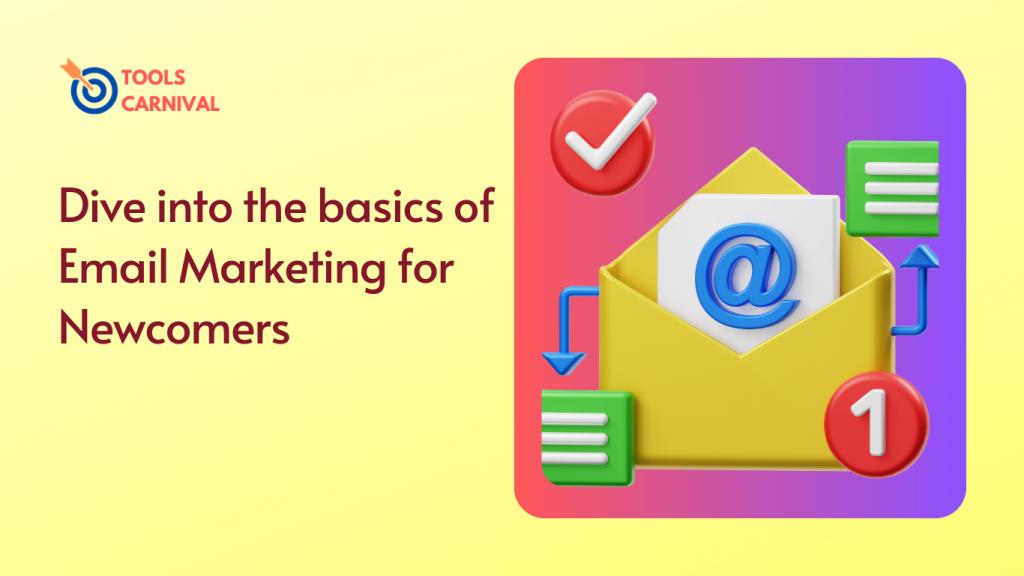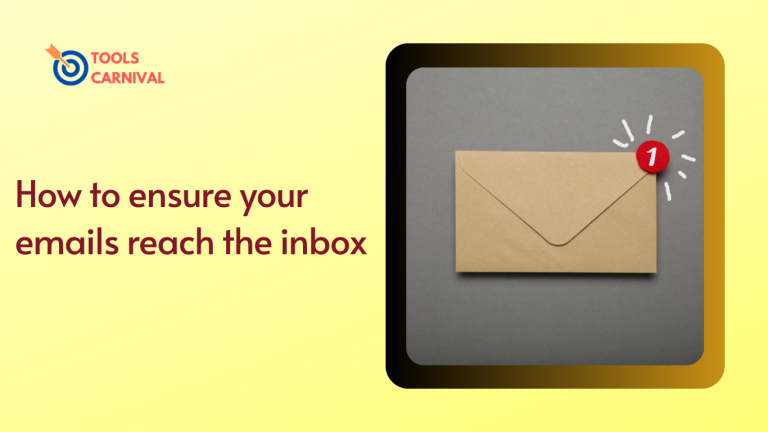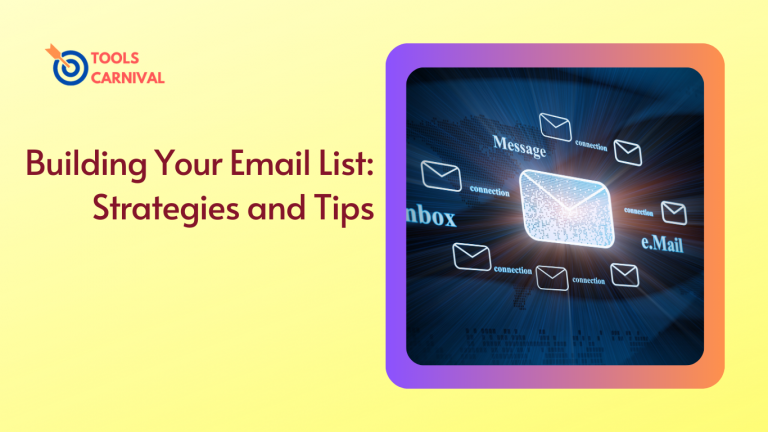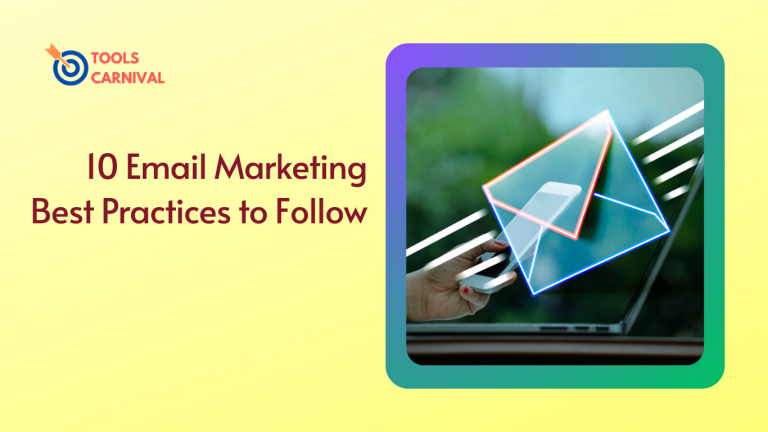Dive into the Basics of Email Marketing for Newcomers

Written By Masud Parvage ♦ November 06, 2023

Table of Contents
ToggleEmail marketing is a dynamic and powerful tool used by businesses and individuals to connect and engage with their audience. It serves as a direct line of communication, enabling you to share information, promote products or services, and build relationships. Embark on the basics of dive into the basics of email marketing for newcomers as we guide you through a comprehensive journey into the world of effective communication through emails.
This guide will walk you through the fundamentals of email marketing, from building an email list to crafting compelling content and understanding the key metrics to gauge success. Whether you’re new to this or seeking to enhance your skills, this introduction will set the stage for a comprehensive journey into the world of email marketing.
The Dos and Don’ts of Email Marketing: Fundamentals
When it comes to email marketing, there are some important things you should and shouldn’t do to make sure your campaigns are effective. Let’s start with the Dos:
- Do Build a Targeted Email List: Gather emails from people who are genuinely interested in your content or products. Quality over quantity matters.
- Do Personalize Your Emails: Use the recipient’s name and segment your list based on interests to send more relevant content.
- Do Optimize for Mobile: Ensure your emails look good and are easy to read on mobile devices.
- Do Test Before Sending: Check your emails for errors, test different subject lines, and preview how they appear in various email clients.
- Do Provide Valuable Content: Offer something of value to your subscribers. Informative, entertaining, or exclusive content keeps them engaged.
Now, let’s talk about the Don’ts:
- Don’t Spam: Avoid sending too many emails. It irritates subscribers and can lead them to unsubscribe or mark your emails as spam.
- Don’t Use Misleading Subject Lines: Be honest and accurate in your subject lines. Deceptive or clickbait subject lines damage trust.
- Don’t Ignore Unsubscribes: Make it easy for people to unsubscribe and honor those requests promptly.
- Don’t Overlook Analytics: Keep an eye on your email campaign performance.
- Don’t Forget to Comply with Regulations: Follow email marketing laws and regulations like CAN-SPAM or GDPR. It’s crucial for legal and ethical reasons.
Remember, email marketing is about building relationships and trust with your audience. The dos and don’ts help in maintaining a positive and engaging interaction with your subscribers.
Building Your Mailing List: Where to Begin?
Building your mailing list is essential for reaching your audience effectively. To start, consider these steps:
- Define Your Audience: Identify who you want to reach with your emails. Understand their needs, interests, and demographics.
- Create Valuable Content: Offer something valuable in exchange for email addresses, like an eBook, a discount, or exclusive content.
- Optimize Your Website: Place subscription forms strategically on your website. Make them noticeable but not intrusive.
- Use Social Media: Promote your newsletter on social platforms.
- Networking and Events: Engage in networking events or webinars. Use these opportunities to encourage sign-ups.
- Email Signature: Add a subscription link to your email signature. Anyone you communicate with via email has a chance to join.
- Choose an Email Marketing Platform: Start by picking an email marketing platform like MailChimp, Constant Contact, or AppSumo Email Marketing.
Remember, building a mailing list takes time and consistent effort. But, starting with these steps will get you on the right path!
Crafting High-Conversion Email Content
Crafting high-conversion email content is crucial for engaging your audience effectively. To create compelling emails, start by understanding your audience’s needs and preferences. Craft attention-grabbing subject lines, personalize the content, and keep it clear and engaging with a strong call to action. Ensure mobile-friendliness and visual appeal while maintaining a consistent brand voice. Test your emails rigorously, learn from analytics, and continuously refine your approach through A/B testing. By following these steps, you can create emails that drive action and build a strong connection with your audience.
Analyzing and Utilizing Email Marketing Metrics
Email marketing metrics are super important for understanding how your emails are performing. These metrics help you figure out what’s working and what’s not. The first thing to consider is the open rate. A high open rate means your subject lines are catching attention. Click-through rate is another key metric. It shows how many people click on the links in your emails. A good click-through rate means your content is engaging.
Conversion rate is crucial. It reveals the percentage of people who take the desired action, like making a purchase or signing up. A high conversion rate means your emails are effective. The bounce rate matters, too. High bounce rates might mean outdated or incorrect email addresses. The unsubscribe rate shows how many people opt-out from receiving your emails. Keeping this rate low is important to retain your audience.
Analyzing these metrics helps you understand what’s resonating with your audience. By using this data, you can improve your email marketing strategy. For instance, if the open rate is low, you might need to work on more compelling subject lines. If the click-through rate is low, your content might need tweaking.
Ready to Skyrocket Your Success?
Take Your Business to New Heights - Discover Growth Strategies Now!
Exploring Email Marketing Tools and Platforms
Exploring Email Marketing Tools and Platforms—GetResponse, HubSpot Email Marketing, Moosend, and iContact—is an essential endeavor for businesses aiming to enhance their marketing strategies through effective email campaigns.
GetResponse:
GetResponse is a versatile and user-friendly email marketing platform. It offers a variety of features tailored for businesses of all sizes.
Key Features:
- Email Creation: Provides a drag-and-drop email editor and an extensive library of templates to create visually appealing emails.
- Automation: Advanced automation tools allow for the creation of targeted and personalized messages based on user behavior.
- Analytics: Offers comprehensive analytics to track campaign performance metrics like open rates and conversions.
- Integration: Seamlessly integrates with various CRM systems and e-commerce platforms.
- Pricing: Offers tiered pricing plans based on the subscriber count.
HubSpot Email Marketing:
HubSpot, renowned for its inbound marketing solutions, offers a comprehensive email marketing tool as part of its suite.
Key Features:
- Email Creation: Provides a user-friendly visual editor and a collection of templates for crafting engaging emails.
- Automation and Personalization: Enables personalized and automated workflows based on user actions.
- CRM Integration: Seamlessly integrates with HubSpot’s CRM system for streamlined customer relationship management.
- Pricing: While a free plan is available, advanced features are accessible through paid tiers.
Moosend:
Moosend is a user-friendly and cost-effective email marketing platform suitable for small to medium-sized businesses.
Key Features:
- Email Creation: Offers a drag-and-drop email builder and pre-designed templates for easy email creation.
- Automation and Personalization: Provides automation and personalization tools to engage subscribers effectively.
- Segmentation: Robust list management and segmentation options for targeted campaigns.
- Pricing: Offers a free plan with limited features, with competitively priced paid plans.
iContact:
iContact is a straightforward and easy-to-use email marketing platform designed for businesses seeking simplicity in their marketing solutions.
Key Features:
- Email Creation: Provides a user-friendly email editor with drag-and-drop functionality and customizable templates.
- Automation: Includes basic automation features for sending automated messages and lead nurturing.
- List Management: Offers list segmentation and subscriber management tools.
- Pricing: Various pricing plans are available, with costs dependent on subscriber count and required features.
In assessing these platforms, consider your business’s specific needs, budget constraints, and the level of functionality and integrations required. Each platform possesses distinct strengths, so select the one that aligns best with your email marketing objectives and business goals.
Before making a final decision, take advantage of free trials or demos offered by these platforms. This allows firsthand exploration of their features and capabilities, aiding in choosing the platform that best suits your business’s email marketing requirements.
Diving Deeper: Advanced Email Marketing Strategies
Advanced dive into the basics of email marketing for newcomers strategies are all about taking your campaigns to the next level. One key aspect is segmentation, where you divide your email list based on various factors like behavior, preferences, or demographics. This helps in creating personalized content that resonates more with each recipient.
Automation is another game-changer. Setting up automated workflows triggered by specific actions or time intervals, such as welcome emails, abandoned cart reminders, or re-engagement sequences, saves time and keeps your audience engaged.
A/B Testing for Optimized Email Performance
Testing plays a crucial role. A/B testing helps refine your strategies. By testing different elements like subject lines, content, CTAs, and send times, you can determine what resonates best with your audience. Mobile optimization is a must. With the majority of people checking emails on their phones, ensuring your emails are mobile-friendly is essential for a seamless user experience.
Embark on the basics of dive into the basics of email marketing for newcomers
Dive into the basics of email marketing for newcomers involves several key steps to effectively connect with an audience. It begins by establishing an email list through various means like website forms, social media promotions, and events, enticing subscribers with incentives. Selecting a reliable email marketing service like Mailchimp or AppSumo Email Marketing Tools is crucial for managing campaigns efficiently, and providing templates and analytics.
Creating compelling content with engaging subject lines and valuable information is essential to capture the audience’s interest. Designing visually appealing emails, personalizing messages, and segmenting the audience for targeted content contribute to higher engagement. Complying with legal regulations, conducting tests, analyzing performance metrics, automating processes, and continuously refining strategies are integral for successful email marketing campaigns.
Conclusion
In conclusion, to dive into the basics of email marketing for newcomers, it’s essential to understand the fundamental principles and best practices. Email marketing can be a powerful tool for reaching your target audience and driving business growth. By focusing on building a quality email list, crafting engaging and relevant content, optimizing for mobile devices, and tracking performance metrics, you can create successful email marketing campaigns. Remember that success in email marketing takes time and continuous improvement, so stay committed to learning and refining your strategies to achieve your goals.
Frequently Asked Questions (FAQs)
Q. What is email marketing, and why is it important for businesses?
A: Explanation of email marketing’s purpose and its significance for reaching and engaging with a target audience.
Q. How can I start with email marketing if I’m new to it?
A: Steps for newcomers to initiate a dive into the basics of email marketing for newcomers, including choosing an email service provider, building an email list, and creating compelling content.
Q. What are the key metrics to track and analyze in email marketing?
A: Explanation of crucial metrics like open rates, click-through rates, conversions, and how to interpret and leverage this data to improve campaigns.
Q. What are the best practices for creating effective email content?
A: Tips on crafting engaging subject lines, designing visually appealing emails, and creating valuable, relevant content for subscribers.
Q. How do I ensure my email campaigns comply with regulations and best ethical practices?
A: Overview of important regulations like GDPR and CAN-SPAM, along with guidance on obtaining consent, managing unsubscribes, and maintaining ethical email marketing practices.
Recommended Reading:
Unlock Exclusive Savings!
Your Lifetime Deals on Tools and Resources Await: Shop Today, Save Forever!



